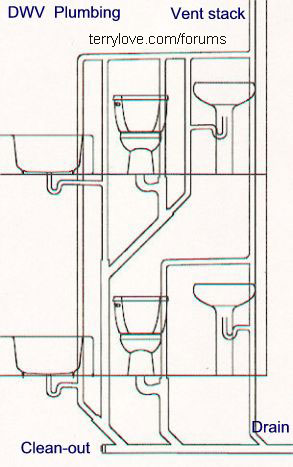DeeAnn
New Member
Hello, guys. I've spent a lot of time reading the posts on your forum and your adviced seems really top notch. I need help with properly venting a basement bath.

There was a wc & sink that were tied directly into the main drain. Neither were vented. We are moving the fixtures and adding a shower. Does my toilet need to be vented since it is so close to my main stack? I could do it easily, but I've read that given the distance to the stack, it doesn't need to be vented.

I am running a vent from the shower next to the exisiting stack. I was going to run it up to 6" above the overflow level of the sink directly above, then connect an AAV rather than have to tie into the cast iron stack. Will that work?

My biggest problem is venting the new sink. It will sit directly below the middle of a bedroom. Can I run a horizontal vent over to the stack? It would have to go around a corner. Can I install an AAV 4" above the drain line? The sink is about 6'6" from the main drain. Any advice would be really appreciated. Thanks so much.

There was a wc & sink that were tied directly into the main drain. Neither were vented. We are moving the fixtures and adding a shower. Does my toilet need to be vented since it is so close to my main stack? I could do it easily, but I've read that given the distance to the stack, it doesn't need to be vented.

I am running a vent from the shower next to the exisiting stack. I was going to run it up to 6" above the overflow level of the sink directly above, then connect an AAV rather than have to tie into the cast iron stack. Will that work?

My biggest problem is venting the new sink. It will sit directly below the middle of a bedroom. Can I run a horizontal vent over to the stack? It would have to go around a corner. Can I install an AAV 4" above the drain line? The sink is about 6'6" from the main drain. Any advice would be really appreciated. Thanks so much.




